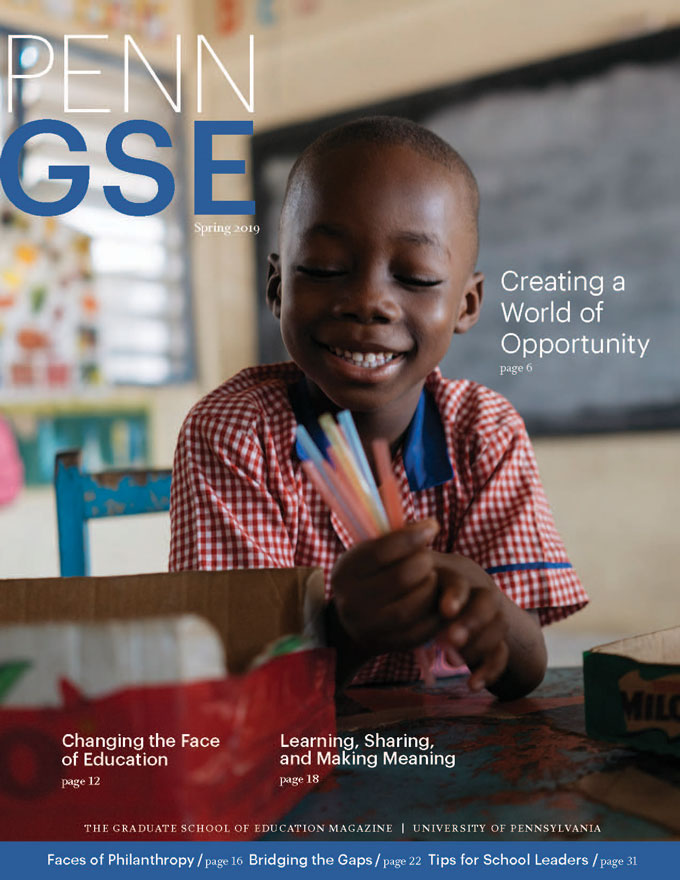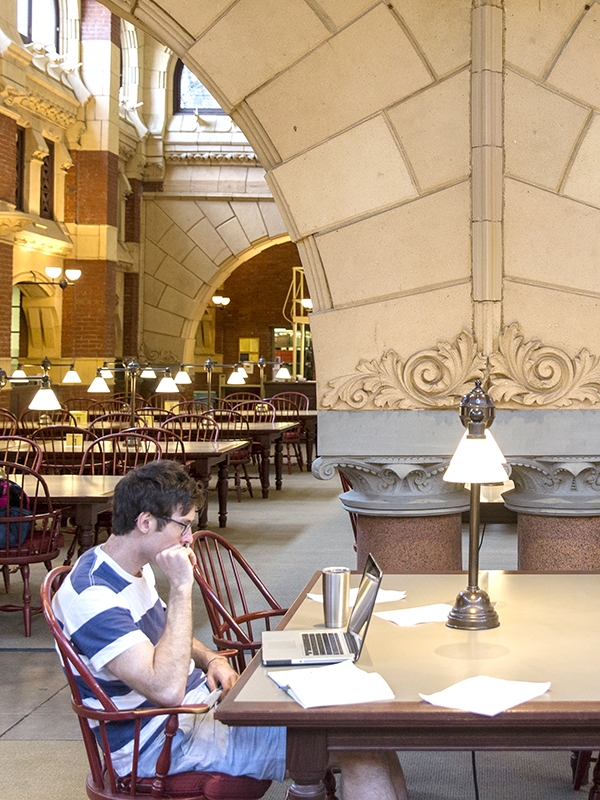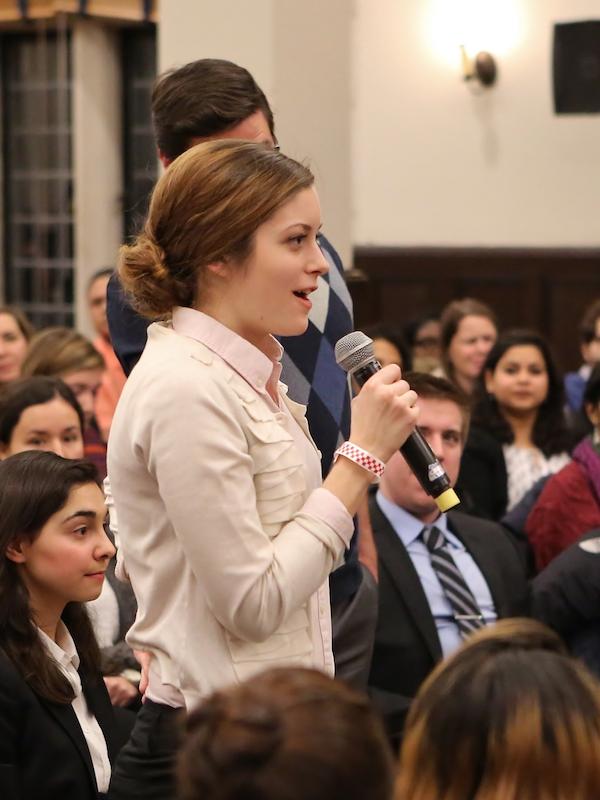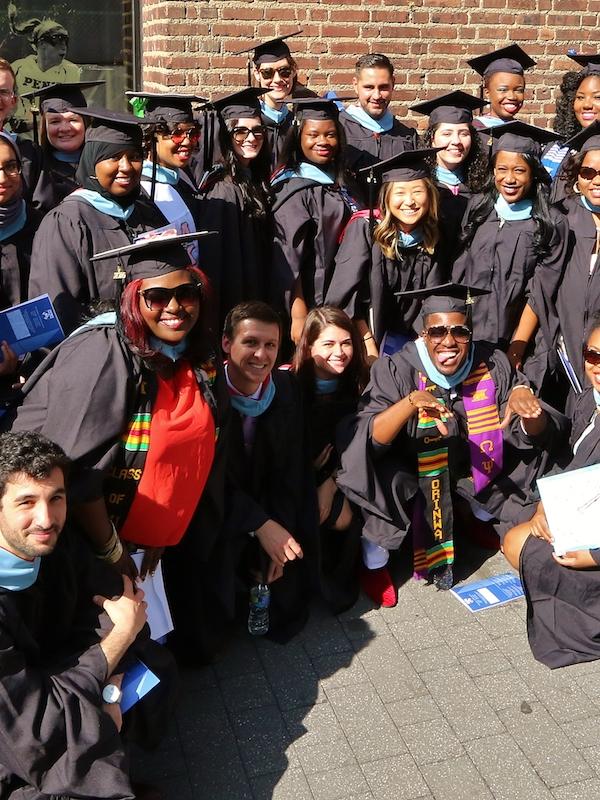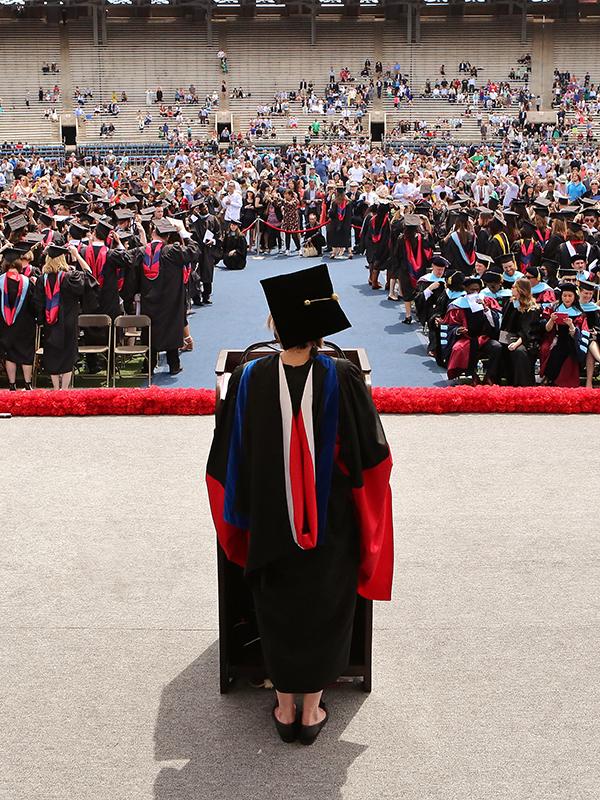Changing the Face of Education: Penn GSE Alumni Make an Impact Around the World
by Lini S. Kadaba
With more than sixteen thousand alumni working in ninety-four countries, the Penn GSE community reaches far and wide. Whether building international models of education or considering diverse cultural contexts, graduates are shaping education around the world and in multicultural communities in the United States. Here, four alumni discuss their work in a global landscape that encompasses higher education in Chile, creative expression in Nepalese schools, leadership training at multinational companies in the Czech Republic and Denmark, and instruction across languages and cultures in Philadelphia schools.

Shaping the Vision of a University
When José Antonio Guzmán, GRD’13, left Santiago, Chile, in 2010 to pursue studies in the United States, he wanted to learn best practices of American universities and bring them back to the up-and-coming Universidad de los Andes (UANDES), where he worked as vice president of academic affairs. He set his sights on Penn GSE’s Executive Doctorate in Higher Education Management program after completing a master’s at Harvard University. Guzmán liked the Penn GSE program’s tight focus on data-driven decision making and pragmatic ideas.
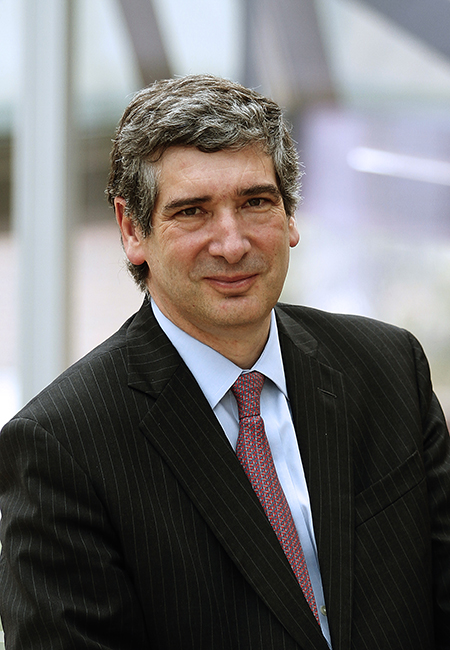
“Though I am very interested in research, I am more of a practitioner in many ways,” says the former lawyer who became president at the nonprofit, private UANDES soon after completing his Ed.D. “I wanted to learn how to run a university.”
Guzmán says the imprint of his time at Penn GSE is visible all around UANDES, home to approximately 8,700 undergraduate and 2,000 graduate students. He has implemented new ideas and reaffirmed other practices, recently earning a renewed contract for a second five-year term.
Based on his Penn GSE dissertation about strategies for fostering quality teaching at Chilean universities, Guzmán introduced teaching prizes and funding akin to research grants. “It’s about creating an environment where faculty members understand their work is appreciated by the rest of the university and valued by students,” he says.
“Things are changing very fast in terms of skill sets required for the jobs of the future. A strong general education prepares students with flexibility and the ability to meet change over time.”
Guzmán also expanded the curriculum of UANDES beyond its previous professional focus, increasing liberal arts classes and adding minors. “Things are changing very fast in terms of skill sets required for the jobs of the future,” he says. “A strong general education prepares students with flexibility and the ability to meet change over time.”
He also made student life a priority, funding programs such as sports and student organizations—typically scarce in Chilean colleges, according to Guzmán. “I think a very strong student experience outside the classroom is an important part of education,” he says.
In other areas, Guzmán’s Penn GSE experiences gave him confidence in the university’s existing structures. Like many institutions in the United States, the 128-acre UANDES has a planned campus in one location and a board of trustees that governs and appoints leadership. It is rare for Chilean universities to have a single campus, he says, and older institutions in the country have presidents and deans elected by the faculty.
“I wanted to have the argument to defend the way this university was organized,” he says. “During my time at Penn GSE, I reaffirmed my conviction that our campus and governance models are key features of UANDES.”
As he looks ahead, Guzmán’s focus is on nontraditional ways to deliver education (massive open online courses, for one) and expanding UANDES’s endowment. He has turned to his Penn GSE cohort for advice. “We’re in touch almost every day,” Guzmán says. “It gives you some perspective. You are not alone in addressing problems.”
Using the Arts to Strengthen Learning
For Sharareh Bajracharya, GR’05, bringing the arts into public schools in Nepal is about more than pretty pictures. Srijanalaya, the nongovernmental organization she chairs and cofounded in Kathmandu, uses art to empower students in underfunded and rural schools.
“We want to offer children the opportunity to express their cultures and identities, as well as a tool to question the world around them,” Bajracharya says.
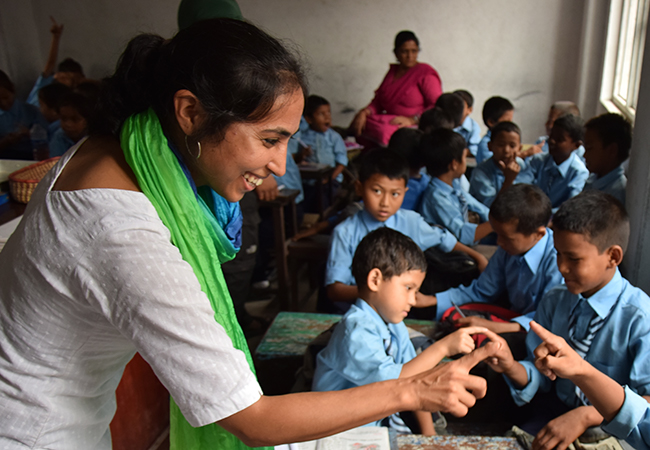
While Nepal’s population includes 125 ethnic groups speaking 123 languages, a legacy of social stratification in the country has marginalized many cultural identities. Access to education in Nepal has expanded dramatically during the past fifty years, but dropout rates remain high, particularly among girls and children from poor families. Bajracharya wants to better engage the most vulnerable students and provide learning opportunities that would not otherwise be available to them.
Bajracharya points to her doctoral studies in education, culture, and society at Penn GSE as having provided the foundation for her work. “It has determined and shaped the way I want to approach education in Nepal,” she says. A particularly influential course was Culture/Power/Identities. “It prompted me to consider the latent assumptions and ideologies that shape systems,” she says. As part of her studies, she examined Nepal’s history to understand how local traditions and languages had been overlooked by the national education system.
“We want to offer children the opportunity to express their cultures and identities, as well as a tool to question the world around them.”
After graduating from Penn GSE, Bajracharya returned to Nepal, where she had spent much of her childhood. She pursued her longtime interest in art, earning a BFA in studio and arts education at Kathmandu University in 2011 and cofounding Srijanalaya in 2013.
The fifteen-member organization’s Art-in-School program focuses on bringing the creative arts into the formal education system in Nepal. Through month-long trainings, Srijanalaya’s art educators work closely with administrators and teachers to integrate the arts into subjects such as math, science, social studies, and language arts. Another key program, ArtWorks! Let’s Play Together, began after the devastating 2015 earthquake in Nepal as a way to help children heal through psychosocial support. Srijanalaya’s art educators travel to government schools in remote communities of the mountainous nation to engage the students and teachers in visual, performing, and language arts workshops.
A hallmark of Srijanalaya is its broad definition of the arts to include not only painting and drawing, but also indigenous dance and music. One activity is a poetry competition in which children create lyrics to a melody in their community mother tongue, making poems through the local practice of song improvisation. While recent educational reform in Nepal aims to bring minority languages into classrooms in the early grades, progress has been slow, and most schools still rely on Nepali and English language instruction. The poetry activity energizes the students and affirms their identities by drawing on their cultural knowledge, Bajracharya says.
“The task is no longer daunting, and they enjoy the process a great deal,” she reports. “We believe our approach helps bridge the gap between what children learn at home and at school.”
Aligning Learning with Business Priorities
Back in 2004, learning leader Robert “Bob” Demare, GRD’14, was in the Czech Republic running his newly established employee coaching company when he says he caught a lucky break. Courier company DHL was consolidating its European information technology operations and opening new headquarters in his backyard of Prague.
“I got a contract to join a team working to induct a thousand employees,” says Demare, originally from London, Ontario. His work training DHL’s staff opened up the opportunity for a management position in 2006. As he worked to maximize professional learning for DHL’s information technology staff, Demare was savvy enough to realize it was time to invest in further learning of his own. He gained the company’s support to pursue a Penn GSE doctorate in the executive-format PennCLO (Chief Learning Officer) program.
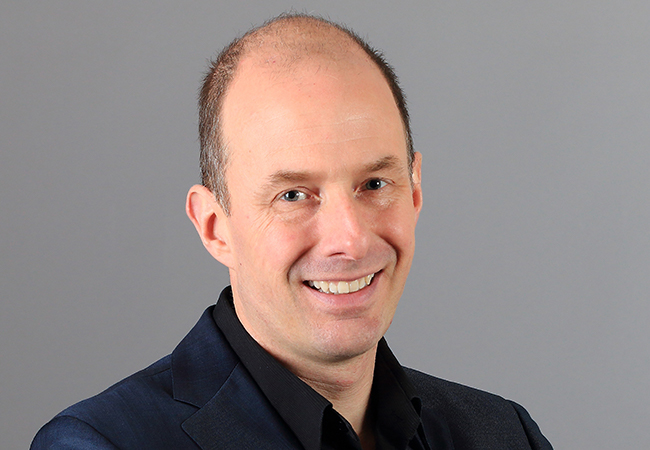
Demare chose the PennCLO program, considered a first-of-its-kind, for its focus on learning in the workplace. “It was about aligning learning with business priorities,” Demare says.
PennCLO students continue working as leaders and executives while pursuing the degree, attending weeklong intensive sessions on campus. They learn how to shape learning in professional environments by creating new models of employee education, communicating among different cultural groups, and making data-driven decisions—all increasingly important skills in a knowledge economy. For his thesis, Demare tackled a challenge he faced at work—capability building for managers of large projects in technology organizations. His work with senior leaders at DHL helped drive the company’s efforts to improve employee engagement.
“I’d go to Penn and get this strategic learning inoculation every few months,” he says. “I’d come back and be so much more on my goal. It grew my confidence.” Just as valuable, he adds, was his cohort of classmates, a network that he continues to rely on.
“I’d go to Penn and get this strategic learning inoculation every few months. I’d come back and be so much more on my goal. It grew my confidence.”
After a stretch at technology company Honeywell, also in Prague, Demare moved in late 2018 to his current position as global head of functional development at the Copenhagen headquarters of shipping giant A.P. Moller-Maersk. At Honeywell, Demare led a team based in Asia, Latin America, and Europe and developed company-wide learning programs to improve business performance in emerging markets. At A.P. Moller-Maersk, his focus is on capability development for corporate functions such as information technology, human resources, and finance. Demare is taking an anthropological view of company culture in order to come up with professional development programs.
“I’m observing these little, interesting things you see in a company, like the way people conduct meetings,” he says. It is a skill he learned at Penn GSE. As in his other jobs, Demare trusts that his Penn GSE background will open up new horizons. “I expect it will lead me to think of ways to approach learning that I never would have before,” he says.
Examining Education, Culture, and Context
Sydney Negus, GED’17, spends much of her workday conducting research and evaluating programs in a diverse school district where more than one hundred different languages are spoken at home by students. She did not have to travel far from Penn GSE to find this multicultural community and put her master’s degree in intercultural communication to good use—Negus works as a research assistant for The School District of Philadelphia.
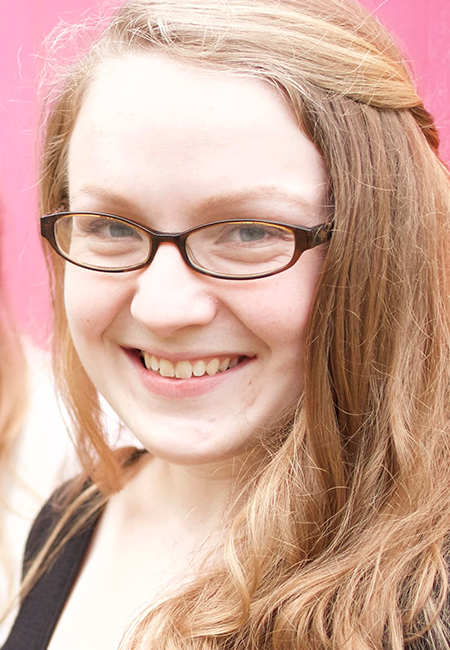
“The field of intercultural communications might seem internationally focused,” she says, “but in our increasingly diverse society, and especially our school system, these skills can be applied at home as well.”
In her role, Negus draws on her background in qualitative research methods to evaluate programs on site. This academic year, she is looking at Together Is Better, a program for English language learners being piloted in three schools. It pairs teachers of English for Speakers of Other Languages (ESOL) with general education teachers. The program keeps English learners in a general classroom, aiming to reduce the disruptions and isolation that can come from being taught separately while also helping native speakers.
“Being able to look at different cultures and how they interact is crucial. I think applying the lens in your own backyard is incredibly valuable.”
“Strategies that are good for ESOL literacy are good for literacy in general,” says Negus, a Bay Area native. For example, a teacher might review vocabulary before a lesson or jump-start students’ writing by providing partial sentences to be completed. “These are structures that can help a struggling reader even if English is their main language,” says Negus.
Negus’s intercultural perspective also aids her broader understanding of school settings. Last school year, she visited eight schools to evaluate the national Playworks TeamUp model, a program that trains school staff to improve recess experiences for students. Negus found that results varied from site to site, and what worked well often depended on the school’s climate and staffing levels. Context mattered— the fundamental lesson she learned in Penn GSE’s Intercultural Communication program.
“A lot of class discussions were about how you can have the best educational theory in the world and write a program that sounds great based on all the best evidence-based research,” Negus recalls. “But in the end, it has to happen in a real context with factors that affect things in ways you never could have anticipated.”
Negus’s interest in that tug between theoretical and practical is what attracted her to Penn GSE’s program and its commitment to field work. As a student she honed her eye for context by exploring how the concept of professionalism was taught to minority students working toward a high school diploma and vocational certification at a Philadelphia school. She wanted to understand how career preparation would be delivered to students—for instance, would instructors help students build on their existing communication skills when teaching them to communicate professionally, and how would that affect students’ trajectories?
“Being able to look at different cultures and how they interact is crucial,” Negus says. “I think applying the lens in your own backyard is incredibly valuable.”
This article originally appeared in the Spring 2019 issue of The Penn GSE Magazine.

